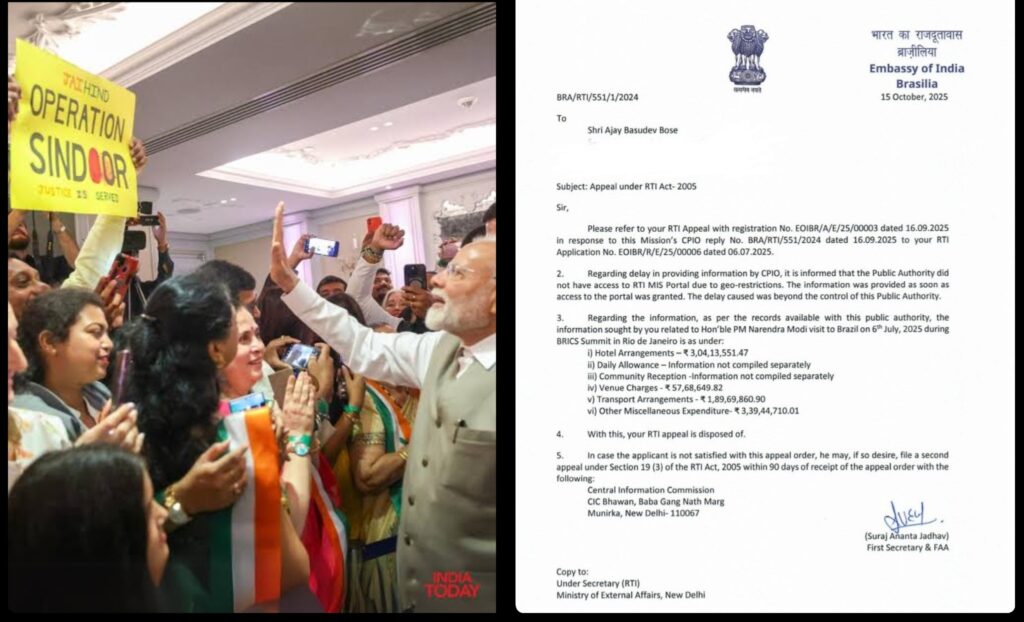
The reported cost of Prime Minister Narendra Modi’s visit to Brazil for the BRICS Summit 2025 on July 6–7 has stirred a heated conversation online and offline.
A Fashion Guide

The reported cost of Prime Minister Narendra Modi’s visit to Brazil for the BRICS Summit 2025 on July 6–7 has stirred a heated conversation online and offline.
According to information said to have been obtained through an RTI filed by Ajay Basudev Bose, the total expenditure for the two-day diplomatic visit is pegged at approximately ₹89,09,67,70 (₹89 crore).
Hotel Arrangements: ₹3,04,13,551
Venue Charges: ₹57,68,649
Transport Arrangements: ₹1,89,69,860
Miscellaneous Expenditure: ₹3,39,44,710
The BRICS Summit is a key platform bringing together Brazil, Russia, India, China, and South Africa — five major emerging economies. India’s participation is considered crucial for strengthening trade, diplomatic alliances, and strategic influence in the Global South.
Supporters of such visits argue that high-level diplomatic engagements often come with large security and logistical costs. They also point out that such summits can help secure international investments, trade deals, and cooperation in sectors like energy, defense, and technology.
However, the reported figures have sparked sharp criticism from several quarters, especially given that nearly 800 million Indians rely on free food grains under government welfare schemes. Critics question whether such lavish spending is appropriate when the country faces economic inequality and pressing social challenges.
The viral post sharing these figures has been accompanied by strong reactions online, with many calling for greater transparency and accountability in the use of public funds.
The authenticity and context of the RTI figures may be further scrutinized. Typically, expenses for state visits include security arrangements, advance delegations, aircraft operations, and diplomatic protocol — many of which are standard for any head of government.
As debates intensify, this incident highlights a recurring tension in public discourse: the balance between diplomatic necessity and public perception of government spending.